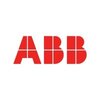Filter interviews by
Wipro Infrastructure Engineering Full Stack Developer Interview Questions and Answers
41 Interview questions
Media queries are CSS techniques that enable responsive design by applying styles based on device characteristics.
Media queries allow you to apply different styles for different screen sizes.
Example: `@media (max-width: 600px) { body { background-color: lightblue; } }`
They can target various features like width, height, orientation, and resolution.
Example: `@media (orientation: portrait) { /* styles for portrait m...
Indexes in MongoDB enhance query performance by allowing faster data retrieval.
Indexes are data structures that improve the speed of data retrieval operations.
They work similarly to an index in a book, allowing quick access to specific data.
MongoDB supports various types of indexes, including single field, compound, and geospatial indexes.
For example, creating an index on a 'username' field allows faster searches ...
Managing state in a full-stack application involves techniques for both client-side and server-side data handling.
Use React's useState and useEffect hooks for local component state management.
Implement Redux or Context API for global state management in React applications.
On the server side, use session management (e.g., Express sessions) to maintain user state.
Utilize databases (e.g., MongoDB, PostgreSQL) to pers...
JSON Web Tokens (JWT) are compact, URL-safe tokens used for secure information exchange between parties.
JWTs consist of three parts: Header, Payload, and Signature.
Header typically contains the type of token (JWT) and the signing algorithm (e.g., HMAC SHA256).
Payload contains claims, which are statements about an entity (usually the user) and additional data.
Signature is created by combining the encoded header, en...
Web applications face various security vulnerabilities that can compromise data integrity and user privacy.
SQL Injection: Attackers can manipulate SQL queries to access or modify database data. Example: 'OR 1=1' in a login form.
Cross-Site Scripting (XSS): Malicious scripts are injected into web pages viewed by users. Example: A comment section allowing HTML input.
Cross-Site Request Forgery (CSRF): Users are tricke...
ACID properties ensure reliable processing of database transactions, maintaining data integrity and consistency.
Atomicity: Transactions are all-or-nothing. Example: If a bank transfer fails, no money is deducted or added.
Consistency: Transactions bring the database from one valid state to another. Example: A transaction must not violate any database rules.
Isolation: Transactions occur independently. Example: Two t...
Form validation in HTML and React ensures user input is correct and enhances user experience.
HTML5 provides built-in validation attributes like 'required', 'minlength', and 'pattern'. Example: <input type='text' required />.
In React, manage form state using 'useState' for controlled components. Example: const [name, setName] = useState('');
Use 'onChange' event to validate input in real-time. Example: <inp...
Synchronous programming executes tasks sequentially, while asynchronous programming allows tasks to run concurrently, improving efficiency.
Synchronous programming blocks execution until a task completes, e.g., reading a file.
Asynchronous programming allows other tasks to run while waiting, e.g., fetching data from an API.
In synchronous code, functions return results immediately; in asynchronous code, they return p...
Routing in Express and Flask involves defining URL patterns and associating them with specific functions to handle requests.
In Express, use 'app.get()', 'app.post()', etc., to define routes. Example: app.get('/users', (req, res) => { ... });
Flask uses the '@app.route()' decorator to define routes. Example: @app.route('/users', methods=['GET']) def get_users(): ...
Both frameworks support route parameters. Exampl...
I implement secure authentication and authorization using tokens, role-based access, and best practices for data protection.
Use JWT (JSON Web Tokens) for stateless authentication, allowing users to log in and receive a token for subsequent requests.
Implement OAuth 2.0 for third-party authentication, enabling users to log in using services like Google or Facebook.
Utilize role-based access control (RBAC) to define u...
Wipro Infrastructure Engineering Full Stack Developer Interview Experiences
1 interview found
I appeared for an interview in May 2025, where I was asked the following questions.
- Q1. How does the virtual DOM function in React?
- Ans.
The virtual DOM in React optimizes rendering by minimizing direct manipulation of the actual DOM, enhancing performance.
The virtual DOM is a lightweight copy of the actual DOM, allowing React to manage changes efficiently.
When a component's state changes, React creates a new virtual DOM tree and compares it with the previous one using a process called 'reconciliation'.
Only the differences (or 'diffs') between the old a...
- Q2. How do you manage routing in Express or Flask?
- Ans.
Routing in Express and Flask involves defining URL patterns and associating them with specific functions to handle requests.
In Express, use 'app.get()', 'app.post()', etc., to define routes. Example: app.get('/users', (req, res) => { ... });
Flask uses the '@app.route()' decorator to define routes. Example: @app.route('/users', methods=['GET']) def get_users(): ...
Both frameworks support route parameters. Example in ...
- Q3. What performance optimization techniques do you employ?
- Ans.
I utilize various techniques like code splitting, caching, and optimizing assets to enhance application performance.
Code Splitting: Load only necessary JavaScript for the current view, improving initial load time. Example: Using React's lazy loading.
Caching: Implement browser caching and server-side caching to reduce load times. Example: Using Redis for caching API responses.
Image Optimization: Compress images and use ...
- Q4. Can you describe a specific instance when you faced a challenge during a team project?
- Ans.
Faced a challenge with team communication during a project, leading to delays and misalignment on tasks.
Team members were using different tools for communication, causing confusion.
I initiated a daily stand-up meeting to align everyone's tasks and progress.
Implemented a shared project management tool (like Trello) to track tasks.
Encouraged open feedback sessions to address any issues promptly.
- Q5. What measures do you take to ensure security in a full stack application?
- Ans.
Implementing security measures in full stack applications is crucial to protect data and maintain user trust.
Use HTTPS to encrypt data in transit, preventing eavesdropping.
Implement authentication and authorization using JWT or OAuth.
Sanitize user inputs to prevent SQL injection and XSS attacks.
Regularly update dependencies to patch known vulnerabilities.
Use environment variables to manage sensitive information like AP...
- Q6. What are your approaches to handling routing in Express or Flask?
- Ans.
Routing in Express and Flask involves defining endpoints to handle requests and responses effectively.
In Express, use 'app.get()', 'app.post()', etc., to define routes. Example: app.get('/users', (req, res) => { ... });
Flask uses decorators to define routes. Example: @app.route('/users', methods=['GET']) def get_users(): ...
Organize routes in separate files for maintainability. In Express, use 'express.Router()' to ...
- Q7. How do the frontend and backend components of an application communicate with each other?
- Ans.
Frontend and backend communicate via APIs, protocols, and data formats to exchange information and perform actions.
1. RESTful APIs: Frontend makes HTTP requests to backend endpoints (e.g., GET, POST) to retrieve or send data.
2. GraphQL: A query language for APIs that allows clients to request specific data, reducing over-fetching.
3. WebSockets: Enables real-time communication between frontend and backend, useful for ch...
- Q8. What are the steps to perform CRUD operations in MongoDB?
- Ans.
CRUD operations in MongoDB involve creating, reading, updating, and deleting documents in a collection.
1. Create: Use `db.collection.insertOne()` or `db.collection.insertMany()` to add documents. Example: `db.users.insertOne({ name: 'John', age: 30 })`.
2. Read: Use `db.collection.find()` to retrieve documents. Example: `db.users.find({ age: { $gt: 25 } })`.
3. Update: Use `db.collection.updateOne()` or `db.collection.up...
- Q9. How does MongoDB manage the storage of data?
- Ans.
MongoDB uses a flexible document model and a binary format for efficient data storage and retrieval.
Data is stored in BSON format, which is a binary representation of JSON-like documents.
Documents are organized into collections, allowing for dynamic schemas.
MongoDB uses a storage engine (like WiredTiger) that supports compression and efficient data access.
Indexes can be created on fields to improve query performance, e...
- Q10. How do you manage form validation in HTML and React?
- Ans.
Form validation in HTML and React ensures user input is correct and enhances user experience.
HTML5 provides built-in validation attributes like 'required', 'minlength', and 'pattern'. Example: <input type='text' required />.
In React, manage form state using 'useState' for controlled components. Example: const [name, setName] = useState('');
Use 'onChange' event to validate input in real-time. Example: <input va...
- Q11. What are indexes in MongoDB, and why are they significant?
- Ans.
Indexes in MongoDB enhance query performance by allowing faster data retrieval.
Indexes are data structures that improve the speed of data retrieval operations.
They work similarly to an index in a book, allowing quick access to specific data.
MongoDB supports various types of indexes, including single field, compound, and geospatial indexes.
For example, a single field index on 'username' allows quick searches for users b...
- Q12. What is the MERN stack, and can you explain each component?
- Ans.
The MERN stack is a JavaScript-based framework for building web applications using MongoDB, Express.js, React, and Node.js.
MongoDB: A NoSQL database that stores data in flexible, JSON-like documents. Example: Storing user profiles.
Express.js: A web application framework for Node.js that simplifies server-side development. Example: Creating RESTful APIs.
React: A front-end library for building user interfaces, allowing f...
- Q13. What tools do you personally use for version control and deployment?
- Ans.
I use Git for version control and CI/CD tools like Jenkins and Docker for deployment, ensuring efficient collaboration and automation.
Git: A distributed version control system that allows multiple developers to work on a project simultaneously.
GitHub: A platform for hosting Git repositories, enabling collaboration and code review.
Jenkins: An open-source automation server that helps automate the deployment process throu...
- Q14. What is Mongoose, and what are its uses?
- Ans.
Mongoose is an ODM library for MongoDB and Node.js, simplifying data modeling and validation.
Mongoose provides a schema-based solution to model application data.
It allows for easy validation of data before saving it to the database.
Mongoose supports middleware, enabling pre and post hooks for operations like save and remove.
Example: Defining a schema for a user model with fields like name and email.
Mongoose enables que...
- Q15. What are indexes in MongoDB, and why are they considered important?
- Ans.
Indexes in MongoDB enhance query performance by allowing faster data retrieval.
Indexes are data structures that improve the speed of data retrieval operations.
They work similarly to an index in a book, allowing quick access to specific data.
MongoDB supports various types of indexes, including single field, compound, and geospatial indexes.
For example, creating an index on a 'username' field allows faster searches for u...
- Q16. What are the differences between SQL and NoSQL databases?
- Ans.
SQL databases are structured and relational, while NoSQL databases are flexible and non-relational.
SQL databases use structured query language (e.g., MySQL, PostgreSQL).
NoSQL databases are schema-less and can store unstructured data (e.g., MongoDB, Cassandra).
SQL databases are ideal for complex queries and transactions.
NoSQL databases excel in scalability and handling large volumes of data.
SQL databases enforce ACID pr...
- Q17. What are the differences between REST and GraphQL APIs?
- Ans.
REST and GraphQL are two different approaches for building APIs, each with unique characteristics and use cases.
REST uses fixed endpoints for resources, while GraphQL uses a single endpoint for all queries.
In REST, the server defines the structure of responses, whereas in GraphQL, clients specify the structure of the response they need.
REST typically returns a fixed data structure, which can lead to over-fetching or un...
- Q18. What is your approach to handling authentication and authorization?
- Ans.
I implement secure authentication and authorization using tokens, role-based access, and best practices for data protection.
Use JWT (JSON Web Tokens) for stateless authentication, allowing users to log in and receive a token for subsequent requests.
Implement OAuth 2.0 for third-party authentication, enabling users to log in using services like Google or Facebook.
Utilize role-based access control (RBAC) to define user r...
- Q19. What is the role of middleware in Express.js?
- Ans.
Middleware in Express.js processes requests and responses, enabling functionalities like logging, authentication, and error handling.
Middleware functions are functions that have access to the request, response, and next middleware function.
They can modify the request and response objects, end the request-response cycle, or call the next middleware function.
Common use cases include logging requests, parsing request bodi...
- Q20. What are the differences between synchronous and asynchronous programming?
- Ans.
Synchronous programming executes tasks sequentially, while asynchronous programming allows tasks to run concurrently, improving efficiency.
Synchronous programming blocks execution until a task completes, e.g., reading a file.
Asynchronous programming allows other tasks to run while waiting, e.g., fetching data from an API.
In synchronous code, functions return results immediately; in asynchronous code, they return promis...
- Q21. Explain the box model in CSS.
- Ans.
The CSS box model describes the rectangular boxes generated for elements, including content, padding, border, and margin.
Content: The innermost part where text and images appear. Example: width and height properties define the size.
Padding: Space between the content and the border. Example: padding: 10px adds space around the content.
Border: A line surrounding the padding (if any) and content. Example: border: 1px soli...
- Q22. What are promises and async/await?
- Ans.
Promises and async/await are JavaScript features for handling asynchronous operations more effectively.
A promise is an object representing the eventual completion or failure of an asynchronous operation.
Promises have three states: pending, fulfilled, and rejected.
Example of a promise: const myPromise = new Promise((resolve, reject) => { /* async code */ });
Async/await is syntactic sugar built on top of promises, mak...
- Q23. What are media queries and how do you use them for responsive design?
- Ans.
Media queries are CSS techniques that enable responsive design by applying styles based on device characteristics.
Media queries allow you to apply different styles for different screen sizes.
Example: `@media (max-width: 600px) { body { background-color: lightblue; } }`
They can target various features like width, height, orientation, and resolution.
Example: `@media (orientation: portrait) { /* styles for portrait mode *...
- Q24. What is the difference between var, let, and const in JavaScript?v
- Ans.
var, let, and const are used for variable declaration in JavaScript, differing in scope, hoisting, and mutability.
var is function-scoped or globally scoped, while let and const are block-scoped.
let allows variable reassignment, whereas const does not allow reassignment after declaration.
Variables declared with var are hoisted, meaning they can be used before their declaration, while let and const are not hoisted in the...
- Q25. What methods do you use to test your full stack application?
- Ans.
I employ various testing methods including unit, integration, and end-to-end testing to ensure application reliability and performance.
Unit Testing: Testing individual components, e.g., using Jest for React components.
Integration Testing: Ensuring different modules work together, e.g., using Mocha to test API endpoints.
End-to-End Testing: Simulating user interactions, e.g., using Cypress to test the entire user flow.
Pe...
- Q26. What are some common security vulnerabilities found in web applications?
- Ans.
Web applications face various security vulnerabilities that can compromise data integrity and user privacy.
SQL Injection: Attackers can manipulate SQL queries to access or modify database data. Example: 'OR 1=1' in a login form.
Cross-Site Scripting (XSS): Malicious scripts are injected into web pages viewed by users. Example: A comment section allowing HTML input.
Cross-Site Request Forgery (CSRF): Users are tricked int...
- Q27. How do you approach performance optimization in both frontend and backend development?
- Ans.
I optimize performance by analyzing bottlenecks, using efficient algorithms, and leveraging caching strategies in both frontend and backend.
Use lazy loading for images and components to reduce initial load time.
Implement code splitting in frontend frameworks like React to load only necessary code.
Optimize database queries by using indexing and avoiding N+1 query problems.
Utilize server-side caching (e.g., Redis) to red...
- Q28. How do you manage state in a full-stack application?
- Ans.
Managing state in a full-stack application involves techniques for both client-side and server-side data handling.
Use React's useState and useEffect hooks for local component state management.
Implement Redux or Context API for global state management in React applications.
On the server side, use session management (e.g., Express sessions) to maintain user state.
Utilize databases (e.g., MongoDB, PostgreSQL) to persist a...
- Q29. What are the differences between client-side rendering and server-side rendering?
- Ans.
Client-side rendering (CSR) loads content in the browser, while server-side rendering (SSR) generates HTML on the server.
CSR fetches data via APIs after the initial page load, e.g., React apps.
SSR sends fully rendered HTML to the client, improving SEO, e.g., Next.js.
CSR can lead to faster interactions after the initial load but may have slower first-page load times.
SSR can improve performance for users with slower devi...
- Q30. What measures do you take to ensure the security of your application?
- Ans.
I implement various security measures to protect applications from vulnerabilities and attacks.
Use HTTPS to encrypt data in transit, preventing eavesdropping.
Implement input validation to prevent SQL injection and XSS attacks.
Utilize authentication and authorization mechanisms, such as OAuth2.
Regularly update dependencies to patch known vulnerabilities.
Conduct security audits and penetration testing to identify weaknes...
- Q31. Can you describe a full-stack project you have worked on?
- Q32. What measures do you take to secure sensitive data in production applications?
- Ans.
Securing sensitive data involves encryption, access controls, and regular audits to protect against unauthorized access.
Use encryption for data at rest and in transit (e.g., AES for storage, TLS for communication).
Implement strong access controls and authentication mechanisms (e.g., OAuth, JWT).
Regularly update and patch software to mitigate vulnerabilities.
Conduct security audits and penetration testing to identify we...
- Q33. How do you utilize .env files to manage environment variables?
- Ans.
Utilizing .env files helps manage environment variables securely and efficiently in development and production environments.
Store sensitive information like API keys and database credentials in .env files to avoid hardcoding them in the source code.
Use a library like dotenv in Node.js to load environment variables from the .env file into process.env.
Example: In a .env file, you might have 'DB_HOST=localhost' and in you...
- Q34. What are Continuous Integration and Continuous Deployment (CI/CD), and what is their significance?
- Ans.
CI/CD are practices that automate software development processes, enhancing code quality and deployment speed.
Continuous Integration (CI) involves automatically testing and merging code changes into a shared repository.
Continuous Deployment (CD) automates the release of code changes to production after passing tests.
CI/CD helps catch bugs early, reducing integration issues and improving collaboration among developers.
T...
- Q35. What are the steps involved in deploying a full-st
- Ans.
Deploying a full stack application involves several key steps from development to production.
1. Development: Build the application using front-end and back-end technologies (e.g., React for front-end, Node.js for back-end).
2. Testing: Conduct unit tests, integration tests, and user acceptance tests to ensure functionality and performance.
3. Build: Compile the application code and assets into a production-ready format (...
- Q36. What is version control, and how do you utilize Git in your projects?
- Ans.
Version control is a system that records changes to files, allowing collaboration and tracking of project history. Git is a popular tool for this.
Git allows multiple developers to work on the same project simultaneously without conflicts.
Using branches in Git, I can develop features independently, e.g., creating a 'feature/login' branch for a new login feature.
I utilize Git commands like 'commit' to save changes, 'push...
- Q37. What are the ACID properties in relational databases?
- Ans.
ACID properties ensure reliable processing of database transactions, maintaining data integrity and consistency.
Atomicity: Transactions are all-or-nothing. Example: If a bank transfer fails, no money is deducted or added.
Consistency: Transactions bring the database from one valid state to another. Example: A transaction must not violate any database rules.
Isolation: Transactions occur independently. Example: Two transa...
- Q38. What is aggregation in MongoDB, and how is it utilized?
- Ans.
Aggregation in MongoDB processes data records and returns computed results, enabling complex data analysis.
Aggregation framework allows for operations like filtering, grouping, and sorting data.
Common stages include $match (filtering), $group (grouping), and $sort (sorting).
Example: To find the total sales per product, use $group to sum sales by product ID.
Aggregation pipelines can be nested, allowing for advanced data...
- Q39. What methods do you use to handle database schema validation in MongoDB?
- Ans.
Schema validation in MongoDB ensures data integrity and consistency using various methods and tools.
Use Mongoose for schema definition: Mongoose allows you to define schemas with validation rules. Example: const userSchema = new mongoose.Schema({ name: { type: String, required: true } });
Implement JSON Schema validation: MongoDB supports JSON Schema for validation. Example: db.createCollection('users', { validator: { $...
- Q40. What are primary keys and foreign keys in the context of relational databases?
- Ans.
Primary keys uniquely identify records in a table, while foreign keys establish relationships between tables.
A primary key is a unique identifier for a record in a table, e.g., 'user_id' in a 'Users' table.
A foreign key is a field that links to the primary key of another table, e.g., 'user_id' in an 'Orders' table referencing 'Users'.
Primary keys cannot contain NULL values and must be unique across the table.
Foreign ke...
- Q41. What are status codes in web development, and can you provide examples of the 200, 404, and 500 status codes?
- Ans.
Status codes indicate the result of an HTTP request, helping clients understand the response from the server.
200 OK: The request was successful, and the server returned the requested data.
404 Not Found: The server could not find the requested resource, indicating that the URL is incorrect or the resource is missing.
500 Internal Server Error: The server encountered an unexpected condition that prevented it from fulfilli...
- Q42. What are JSON Web Tokens (JWT), and what is their mechanism of operation?
- Ans.
JSON Web Tokens (JWT) are compact, URL-safe tokens used for secure information exchange between parties.
JWTs consist of three parts: Header, Payload, and Signature.
Header typically contains the type of token (JWT) and the signing algorithm (e.g., HMAC SHA256).
Payload contains claims, which are statements about an entity (usually the user) and additional data.
Signature is created by combining the encoded header, encoded...
- Q43. How do you handle file uploads in Express.js?
- Ans.
Handle file uploads in Express.js using middleware like multer for easy processing and storage.
Use multer middleware to handle multipart/form-data, which is used for file uploads.
Install multer: `npm install multer`.
Set up multer in your Express app: `const multer = require('multer'); const upload = multer({ dest: 'uploads/' });`.
Create a route for file uploads: `app.post('/upload', upload.single('file'), (req, res) =&...
- Q44. What is the difference between the PUT and PATCH HTTP methods?
- Ans.
PUT replaces the entire resource, while PATCH updates only specific fields of a resource.
PUT is idempotent, meaning multiple identical requests have the same effect as a single request.
PATCH is used for partial updates, allowing changes to specific fields without affecting the entire resource.
Example of PUT: Sending a complete user object to update a user profile.
Example of PATCH: Sending only the email field to update...
- Q45. What are RESTful APIs?
- Ans.
RESTful APIs are web services that follow REST principles, enabling communication between client and server using standard HTTP methods.
REST stands for Representational State Transfer, a software architectural style.
Uses standard HTTP methods: GET (retrieve), POST (create), PUT (update), DELETE (remove).
Resources are identified by URIs (Uniform Resource Identifiers), e.g., /users/123.
Stateless interactions: each reques...
Interview Preparation Tips
Top trending discussions






Interview questions from similar companies

I applied via Referral and was interviewed before Mar 2023. There was 1 interview round.
(2 Questions)
- Q1. Palindrome question
- Q2. Anagram question


Profit loss, directions, all basic aptitude.
(2 Questions)
- Q1. Tell me about your self
- Q2. What do you know about cloud
- Ans.
Cloud computing is the delivery of computing services over the internet.
Cloud computing allows users to access and store data and applications on remote servers.
It offers scalability, flexibility, and cost-effectiveness compared to traditional on-premises solutions.
Examples of cloud services include Amazon Web Services (AWS), Microsoft Azure, and Google Cloud Platform.
(1 Question)
- Q1. Where do you see yourself in 5 years
(1 Question)
- Q1. Do you want to do foreign studies
Skills evaluated in this interview

I applied via LinkedIn and was interviewed in Apr 2022. There were 2 interview rounds.

(2 Questions)
- Q1. How do you handle dynamic sharepoint permission through flows
- Ans.
Dynamic SharePoint permissions can be handled through flows using the 'Grant Access to an Item or a Folder' action.
Use the 'Grant Access to an Item or a Folder' action in the flow
Set the 'Site Address' and 'List Name' for the SharePoint site and list
Set the 'Item ID' for the specific item you want to grant access to
Set the 'User or Group' field to the user or group you want to grant access to
Set the 'Permissions' field...
- Q2. How do you handle casaded dropdown
- Ans.
Cascaded dropdowns are handled by populating the second dropdown based on the selection made in the first dropdown.
Create an event listener for the first dropdown to detect changes
Use AJAX to retrieve data for the second dropdown based on the selected value of the first dropdown
Populate the second dropdown with the retrieved data
Interview Preparation Tips
Skills evaluated in this interview

I applied via Approached by Company and was interviewed in Feb 2024. There were 2 interview rounds.
Time , profit and loss
Basic questions and answers
Interview Preparation Tips

I applied via LinkedIn and was interviewed in Nov 2024. There was 1 interview round.
Medium to hard dsa problem
Interview Preparation Tips

(2 Questions)
- Q1. What is middle ware
- Ans.
Middleware is software that acts as a bridge between different applications or components, allowing them to communicate and work together.
Middleware facilitates communication between different software applications or components
It can handle tasks such as data transformation, security, and routing
Examples of middleware include message brokers like RabbitMQ, web servers like Apache Tomcat, and API gateways like Kong
- Q2. What is routing
- Ans.
Routing is the process of selecting a path for network traffic to travel from its source to its destination.
Routing involves determining the best path for data packets to travel through a network.
It is typically done by routers, which use routing algorithms to make decisions.
Examples of routing protocols include OSPF, BGP, and RIP.
Skills evaluated in this interview

Software Developer Interview Questions & Answers
Thermax Limitedposted on 18 Dec 2021
Interview Questionnaire
2 Questions
- Q1. Skill Sets abd Projects
- Q2. Describer Projects done in previous company
Interview Preparation Tips

I applied via Naukri.com and was interviewed in Jun 2024. There was 1 interview round.
(2 Questions)
- Q1. List and dictionary
- Q2. Django framework

(1 Question)
- Q1. Introduce yourself
- Ans.
I am a software developer with 5 years of experience in Java, Python, and SQL.
5 years of experience in Java, Python, and SQL
Strong problem-solving skills
Experience working in Agile development environment
Wipro Infrastructure Engineering Interview FAQs
Some of the top questions asked at the Wipro Infrastructure Engineering Full Stack Developer interview -
Tell us how to improve this page.
Wipro Infrastructure Engineering Interviews By Designations
- Wipro Infrastructure Engineering Operations Trainee Interview Questions
- Wipro Infrastructure Engineering Senior Engineer Interview Questions
- Wipro Infrastructure Engineering Software Engineer Interview Questions
- Wipro Infrastructure Engineering Assistant Manager Interview Questions
- Wipro Infrastructure Engineering Senior Production Engineer Interview Questions
- Wipro Infrastructure Engineering Project Manager Interview Questions
- Wipro Infrastructure Engineering Accountant Interview Questions
- Wipro Infrastructure Engineering Production Manager Interview Questions
- Show more
Interview Questions for Popular Designations
- Software Developer Interview Questions
- Java Developer Interview Questions
- Front end Developer Interview Questions
- Web Developer Interview Questions
- Senior Software Developer Interview Questions
- Application Developer Interview Questions
- Salesforce Developer Interview Questions
- Junior Software Developer Interview Questions
- Show more
Overall Interview Experience Rating
based on 1 interview experience
Difficulty level
Duration
Interview Questions from Similar Companies
|
Assistant Manager
121
salaries
| ₹5.1 L/yr - ₹16.2 L/yr |
|
Senior Engineer
103
salaries
| ₹4 L/yr - ₹9 L/yr |
|
Trainee
89
salaries
| ₹1.2 L/yr - ₹2.5 L/yr |
|
Quality Engineer
62
salaries
| ₹1.5 L/yr - ₹5.2 L/yr |
|
Team Member
59
salaries
| ₹2.8 L/yr - ₹4.6 L/yr |

Thermax Limited

Cummins

ABB

CNH ( Case New Holland)
- Home >
- Interviews >
- Wipro Infrastructure Engineering Interview Questions













